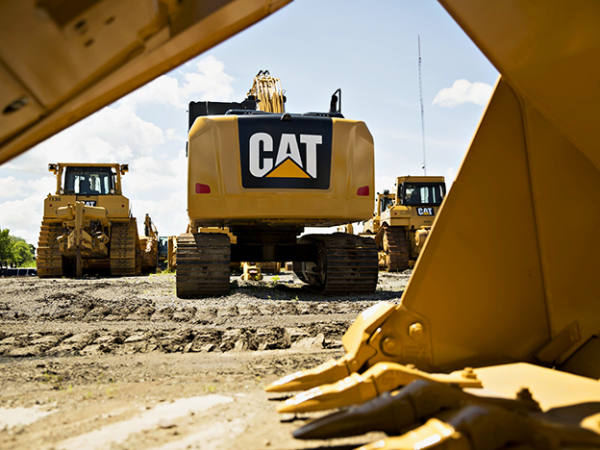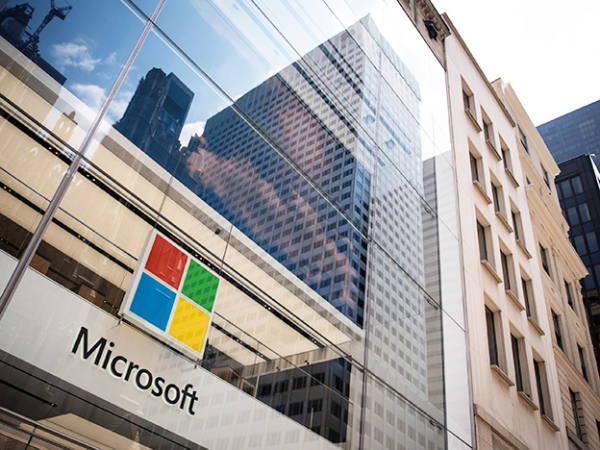- Rising price of commodities and energy makes efficiency of 3D printing more appealing
- 3D printing market forecast to quadruple by end of the decade
Rising commodity prices and disrupted supply chains are setting the scene for a renaissance in 3D printing. The technology – also known as additive manufacturing (AM) – has existed since the late 1980s but has yet to be widely adopted.
However, the effects of the pandemic – emphasised by China’s lockdown this week of the Shenzen region – means companies are now considering AM to secure supply chains and reduce the waste of metals.
“People will look back on the pandemic as an inflection point for 3D printing,” said Peter Leys, executive chairman of Materialise (US:MTLS). “The last couple [of] years has allowed us to show customers that 3D printing can work and they are now considering other ways to adopt it into their supply chains.”
Although events of the last two years have ruptured supply chains in a dramatic way, globalisation has been on the retreat for the last decade. Between 1970 and 2008 global trade as a percentage of global GDP rose from 25 per cent to 61 per cent, according to the World Bank. That proved to be the peak and since then it has been on a downward trajectory, slipping to 52 per cent in 2020.
This shift should benefit AM companies that produce both the machines and the software to run them. Last year, Lux Research forecast that the market for 3D printed parts would grow from $12bn (£9.2bn) to over $50bn by the end of the decade.
Meanwhile, Grandview Research is expecting a 21 per cent compound annual growth for the global 3D printing market between 2021 and 2028. This is faster than the 15.7 per cent rate it forecast for the much-publicised cloud computing market that has been driving growth at Amazon (US:AMZN), Alphabet (US:GOOGL) and Microsoft (US:MSFT).
“3D printing will be a key in the future manufacturing landscape thanks to benefits that it can bring over injection moulding, machining, casting or other conventional methods,” said Anthony Schiavo, research director at Lux Research.
Flexibility is key
The sudden shutdown of Chinese manufacturing at the beginning of 2020 left lots of companies that rely on ‘just in time’ supply chains short of essential parts. CNH (US:CNHI), a producer of agricultural equipment, couldn’t ship a vital clamping fixture from a Chinese manufacturer to its plant in Holland. It faced having to shut down its assembly so accepted the much higher costs of 3D printing.
Materialise managed to print the parts within a week at a cost of €15 (£12.60) per unit, compared the usual €2. “AM was the fastest and most cost-effective way forward,” said Luigi Neirynck, the CNH plant director. “It was also the only way to guarantee order fulfilment on time."
A 2020 survey by consultant McKinsey found that more than three-quarters of automotive, aerospace and defence manufacturers wanted to regionalise production – remove intercontinental layers of the supply chain, that is. By 2021, only 22 per cent had been able to achieve this because of issues finding suitable suppliers to support their localisation or near-shoring plans. Despite these challenges, almost 90 per cent of respondents said they "expect to pursue some degree of regionalisation during the next three years”.
Cutting out waste
AM is also helpful for securing supply chains as multiple different parts can be printed from the same machines. Every time a part is printed, the code is saved in the cloud and it can then be reused to print an identical part in a separate location. The data is centralised but the production can take place anywhere.
Another key benefit is efficiency. Traditional manufacturing is subtractive, in that it removes material until the required part is left, creating waste. The US Department of Energy estimated that compared to traditional manufacturing, AM could slash material costs by nearly 90 per cent and cut energy use in half.
Rising energy and commodities prices due to recent sanctions on Russia could lead to companies looking more seriously at including AM in their supply chains. “If you are printing something made of an expensive metal like titanium or palladium and you can reduce waste by 90 per cent, the cost saving really adds up. Even if it is slower, it is worth it,” said Schiavo at Lux Research.
The price of palladium last week hit a record high of over $3,400 an ounce before falling back to around $2,500, while the price of structural steel is already 50 per cent more expensive in the UK than 12 months ago. On top of this, the price of Brent crude rose to its highest level since 2008 last week before falling back in recent days.
The problem with AM is that although it is more efficient with materials, it is not as good for mass production. So far, it has been favoured by aerospace companies – such as Boeing (US:BOE) and Airbus (FR:AIR) – that produce fewer, more specialised items, as opposed to automotive companies that need to mass produce at a larger a scale.
However, in the last year, sectors outside of aerospace have started showing more interest in the technology.
Velo3D (US:VLD) increased shipments of its AM machines by 75 per cent in 2021 and is expecting revenue to more than triple to $89mn in 2022. On an analyst call, chief executive Benyamin Buller put part this growth down to an expansion to “include new verticals such as energy, aviation and defence, contract manufacturing and other industrial applications”.
Norway-headquartered Norsk Titanium (NO:NTI), which prints titanium parts for both Boeing and Airbus, is also planning to branch out into the industrial and defence sectors due to the slowdown in aviation caused by the Covid-19 pandemic. It is aiming to hit $150mn of annual revenue by 2026 – a big jump from the $5.3mn it generated in 2021.
Boom in innovation after patent expiration
In 1984, manufacturer Charles Hull used a UV laser to harden liquid resin to create 3D shapes. This technology was named stereolithography. Hull patented it in 1986 and started 3D Systems (US:DDD). A few years later, Scott Crump patented a new method called fused deposition modelling (FDM), which melted plastic filament and placed layers on top of each other. The patent for FDM was issued to Crump’s company, Stratasys (US:SSYS), in 1992.
These patents stifled wider innovation for the next two decades but when they expired at the start of the 2010s there was an influx of new businesses into the space. “Stratasys and 3D Systems had existed since the 1990s but once the patents were lifted competition came in, reduced costs and stole some of their lunch money,” explained Schiavo. Since 2016, 3D Systems’ revenue has fallen 2.7 per cent to $616mn and Stratasys' is down 10 per cent to $607mn.
With new innovative companies entering the space there is the potential for exponential improvements. AM is about machines but also about data. “There is a digital supply backbone. If a mining company prints a part in Latin America, the same code can be used to create the same component in Europe,” Leys said.
As more data is gathered, the software will get better at producing the parts. However, Leys says this will create data privacy issues for companies to manage. “If an AM company is working for VW and Peugeot, for example, would they be happy for the data to be shared with each other? These are issues that need to be worked out.”
As with most technology, the most innovative AM companies are listed in the US – last year both Markforged (US:MKFG) and Velo3D listed on the NYSE. In the UK, manufacturing company Renishaw (RSW) has an AM product, however demand for its RenAm 500Q multi-laser system fell in 2020. The company said “a growth in the number of new market entrants has led to a global oversupply of AM systems and strong price competition, particularly for new accounts”.
AM is not about to completely replace traditional manufacturing because of its inability to produce at large scale. However, recent global events have tipped the balance further in its favour and companies have woken up to its ability to supplement and improve the operations they already have in place. As with any data-driven technology, the more it is used, the better it will get.












